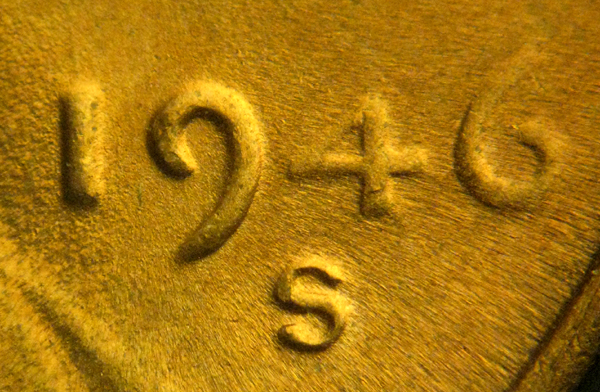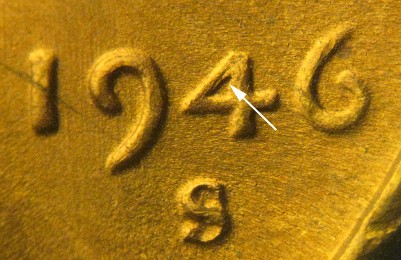PART IV: Die Errors
Retouching the Date:
Master or Working Dies
Definition: The date has been re-engraved on the master or working die.

The working dies used for the 1946-S Lincoln cent appear to have had weakness in numerals 4 and 6. This may be due to insufficiently deep engraving of those digits into that year’s master die. The above image shows this weakness in the last two digits of the date. However, the 1946-(P) and the 1946-D Lincoln cents do not have this weakness, and they were presumably produced by the same master die. The weakness in the 1946-S dies may instead be due to wear affecting the master die. This would, of course, mean that the San Francisco working hubs were produced after those intended for Philadelphia and Denver.


Whatever the cause, the Mint seemed to be aware of it and tried to correct the weakness in the last two digits by retouching them. Above are two examples that show attempts to re-engrave numeral 4. The diagonal of the 4 exhibits a rough crease (white arrow). Notice that these are two different working dies, as indicated by the two different mintmark styles.


The doubling commonly seen on the last two digits of the 1944 Lincoln cent was long thought to be the result of master die doubling. This determination was changed when it became apparent that the last two digits were engraved into the master die of that year, rather than punched-in. The doubling would therefore have to be the result of re-touching the last two digits.
The image above and to the left shows extra serifs at the bottom of the last two digits (“44”) as well as notching at various location. As the master die transfers its design to a succession of working hubs, these faults became less distinct over time. The image above and to the right shows the gradual fading of those errant marks.